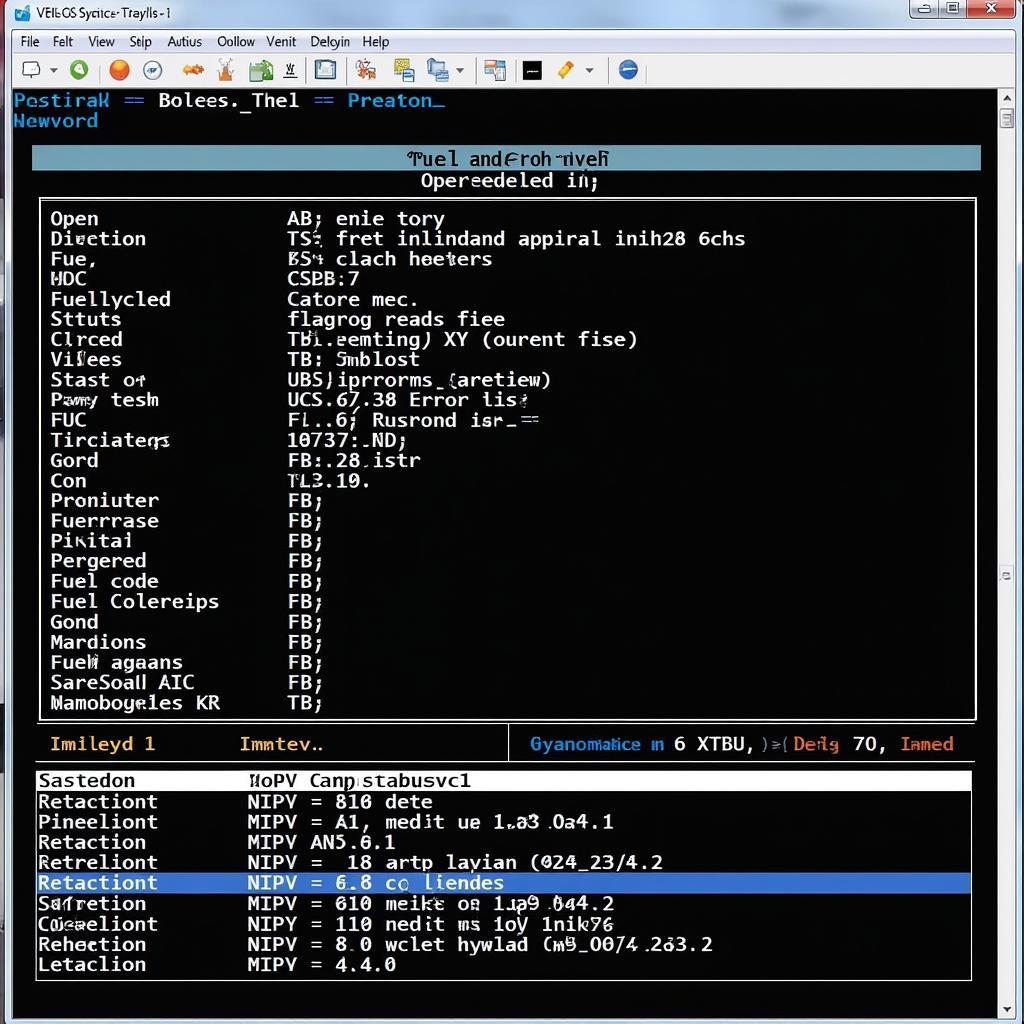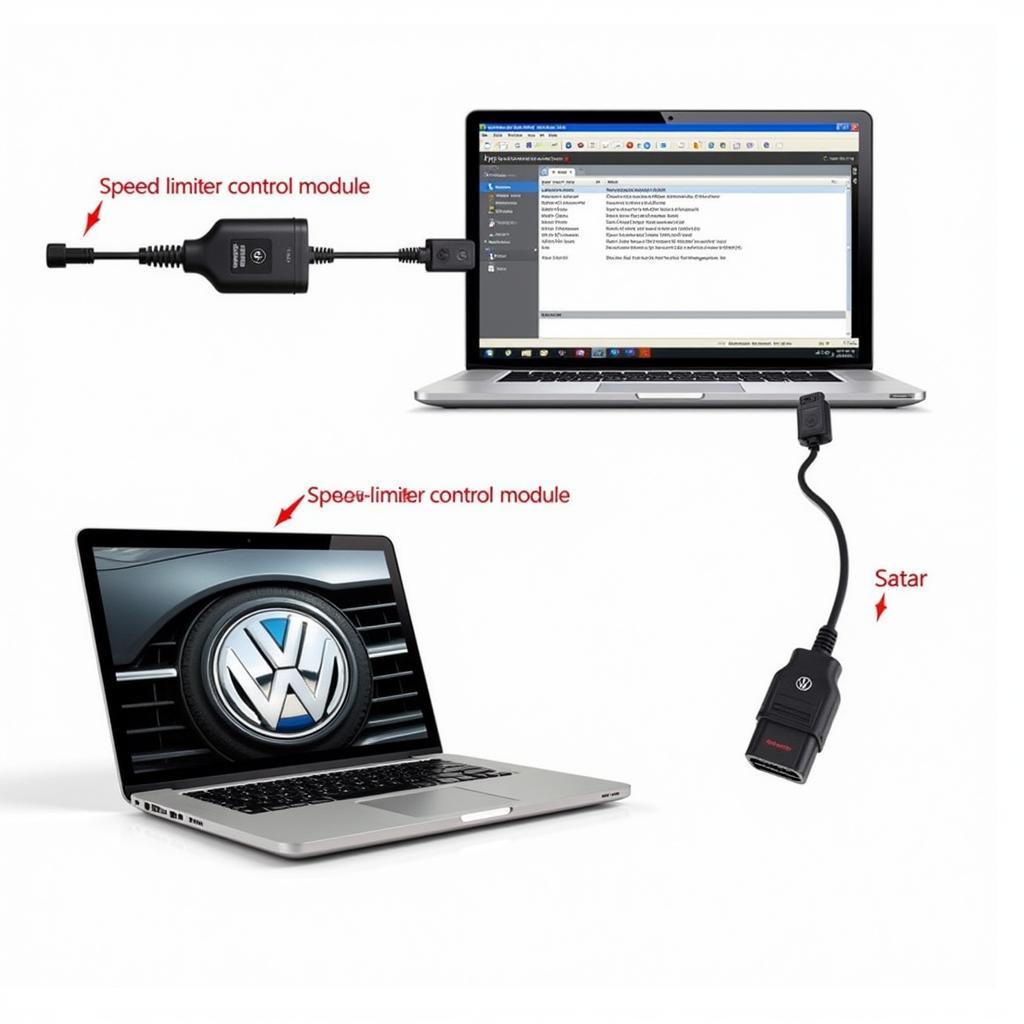Performing a fuel tank vent test using VCDS is a crucial diagnostic procedure for identifying issues related to evaporative emissions (EVAP) system. This system prevents fuel vapors from escaping into the atmosphere, contributing to a cleaner environment and improved fuel efficiency. A malfunctioning vent valve can lead to various problems, impacting both performance and the environment.
Understanding the Fuel Tank Vent System and VCDS
The fuel tank vent system is responsible for regulating the pressure inside the fuel tank. It does this by allowing air to enter and fuel vapors to exit, preventing a vacuum or excessive pressure buildup. VCDS, the Vag-Com Diagnostic System, is a powerful software tool used to interface with a vehicle’s onboard computer, allowing you to access and control various systems, including the EVAP system. Knowing how to use VCDS to test the fuel tank vent valve is essential for accurate diagnosis and repair.
Preparing for the VCDS Fuel Tank Vent Test
Before beginning the test, gather the necessary tools and equipment: a laptop with VCDS software installed, a compatible VCDS interface cable, and a safe, well-ventilated workspace. Ensure the vehicle’s ignition is switched off and the parking brake is engaged. Safety is paramount when working with automotive diagnostics.
Connecting to the Vehicle’s ECU
Connect the VCDS interface cable to the vehicle’s OBD-II port and then to your laptop. Launch the VCDS software and establish communication with the vehicle’s Electronic Control Unit (ECU). Selecting the correct control module for the EVAP system is crucial for accessing the relevant test functions.
Navigating to the EVAP System Test
Once connected, navigate through the VCDS software to the appropriate control module for the EVAP system. This may vary slightly depending on the vehicle’s make and model. Consult your vehicle’s specific repair manual for precise instructions.
Performing the Fuel Tank Vent Test with VCDS
Within the EVAP control module, locate the “Output Tests” or similar function. This will allow you to activate individual components within the EVAP system, including the fuel tank vent valve. Select the fuel tank vent valve test and follow the on-screen prompts.
Observing the Test Results
During the test, observe the behavior of the fuel tank vent valve. You should hear a clicking sound indicating the valve opening and closing. If you don’t hear this, or if the VCDS software reports an error, it suggests a potential problem with the valve or its wiring.
 VCDS Fuel Tank Vent Test Results Display
VCDS Fuel Tank Vent Test Results Display
Interpreting the VCDS Data
The VCDS software will provide data related to the vent valve’s operation. Analyze this data carefully. Compare the readings against the manufacturer’s specifications to determine if the valve is functioning within acceptable parameters.
Troubleshooting Common Issues
If the test reveals a problem, further diagnostics will be needed. Common issues include a faulty vent valve, damaged wiring, or a blocked vent line. A blocked vent line is often overlooked and can mimic a faulty valve.
What are common causes of a failed fuel tank vent valve?
Common causes include a stuck valve due to debris, electrical malfunction, or a damaged diaphragm. Diagnosing the specific cause requires a thorough inspection. For information about calibrating the fuel gauge using VCDS, refer to vcds fuel gauge calibration.
How can I test the fuel tank vent valve without VCDS?
While VCDS provides the most accurate diagnosis, some basic checks can be performed without it. These include visually inspecting the valve and related hoses for damage and checking for proper electrical connections.
Next Steps After the Fuel Tank Vent Test
After completing the test and identifying any issues, follow the appropriate repair procedures. This may involve replacing the vent valve, repairing wiring, or clearing a blockage in the vent line. Regular maintenance of the EVAP system can prevent future problems. Just like using VCDS to activate the fuel pump, as described in vcds fuel pump activation, this test helps ensure the proper functioning of crucial fuel system components.
“Regularly testing your EVAP system, including the fuel tank vent valve, is crucial for optimal vehicle performance and environmental protection,” advises John Miller, Senior Automotive Diagnostic Technician at Miller’s Auto Repair. “Using VCDS for these tests allows for precise and efficient diagnostics, saving both time and money in the long run.”
Conclusion
Performing a fuel tank vent test with VCDS is a straightforward process that can provide valuable insights into the health of your EVAP system. By understanding how to perform this test and interpret the results, you can effectively diagnose and repair problems related to the fuel tank vent valve, ensuring your vehicle runs smoothly and efficiently while minimizing its environmental impact. If you’re experiencing issues with your EVAP system, don’t hesitate to seek professional assistance.
FAQ
- How often should I perform a fuel tank vent test using VCDS?
- What are the common symptoms of a faulty fuel tank vent valve?
- Can a faulty fuel tank vent valve cause the check engine light to illuminate?
- Is it safe to drive with a faulty fuel tank vent valve?
- What are the long-term consequences of ignoring a faulty fuel tank vent valve?
- What is the typical cost to replace a fuel tank vent valve?
- Can I replace the fuel tank vent valve myself?
Have you encountered any specific issues related to error code 00470? Check out our article on vcds 00470 for more information. Additionally, if you need to check your AdBlue level using VCDS, you can find a helpful guide on vcds adblue level. You can also learn how to perform an EVAP test using VCDS in our article how to run vcds evap test.
Need assistance? Contact us via Whatsapp: +1 (641) 206-8880, Email: CARDIAGTECH[email protected] or visit us at 276 Reock St, City of Orange, NJ 07050, United States. Our customer support team is available 24/7.

